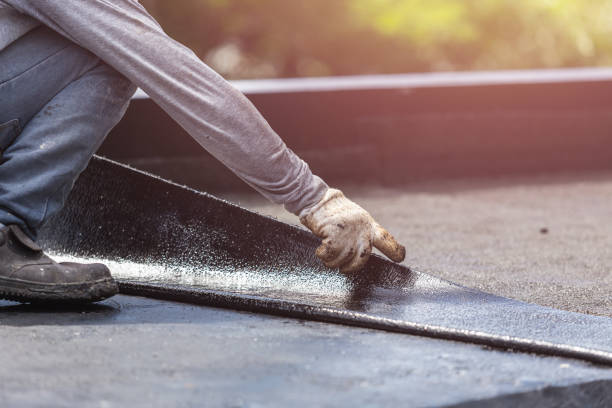Most times, professionals use the membrane roofing system when building flat or nearly flat roofs. This roofing system helps ensure the roof lasts longer while providing adequate protection for the home. However, the membrane roofing system strictly requires correct installation expertise. If you don’t install them correctly, their seams may easily fail.
This post will take a more in-depth look at why membrane seam failure happens to some roofs.
Why Membrane Seam Failure Happens to Some Roofs
Your seams will always be vulnerable to damage, no matter the materials you use to build your roof. The only thing you can do to reduce the chances of this happening is to keep them intact for longer by sealing them properly. Let’s consider the methods of installing seams on roofs. When thermoplastics are the major roofing materials, they are usually heated with hot air until they melt and take the shape of the roof flashing.
Meanwhile, roofing materials like bitumen are usually sealed using cold adhesives or molten asphalt. Regardless of the method being used, they will need to properly seal both sides of the seams to prevent seam failure.
Other Causes of Membrane Seam Failure
Below are some other major causes of membrane seam failure.
1. Ultraviolet (UV) rays
Ultraviolet rays usually produce a high level of brittleness which causes roofing material to excessively dry up. When roofing materials get excessively dry, they may crack and develop holes in the seams. Consequently, the seams may begin to shrink and deteriorate due to extreme weather conditions.
To make matters worse, you may not be able to easily fix the issue if the seams on your roof were installed using strong adhesives. The weakened roof layers will have tears that will be hard to correct, and you may have to pull them out.
Your only possible way around it is if you notice the issue on time before the damage becomes serious. If you want better protection for your roof, consider using UV-reflective roofing material with special coatings. Those types of materials help to reduce the amount of heat that gets into your roof.
2. Wear and tear
Over time, your roof will wear and tear due to constant exposure to different weather conditions. Heat, snow, ice, and rain gradually contribute to the wearing and tearing of your roofs. No matter how durable your roof is, it will eventually begin to give in to natural weathering. When this begins, your roof will start shrinking, and it will start experiencing some brittleness which affects the seals of the membrane.
3. Inadequate insulation
If you have proper insulation on your roofing system, it will be highly resistant to membrane seam failures. When your roof’s insulation material is not attached properly, it will get bent under the membrane. As the insulation material moves, the seams will begin to pull together, causing cracks and tears in different parts of your roof.
4. Extreme weather conditions
Extreme weather conditions, like thunderstorms, snowfall, etc., can cause your membrane roofing systems to shrink and become brittle. Since you cannot stop these weather conditions, you should call professionals to check your roof regularly – especially after heavy rainstorms or snowfalls. When you hire roofing professionals like Roof pro, they can inspect your roof for damages and help you fix such damages if there are any.
5. Improper sealing methods
More often than not, the reason for the failure of membrane seams is that the roofing contractor needed to seal the seams correctly. For example, ethylene propylene diene monomer (EPDM) roofs usually need a special silicone sealant before their seams can tightly stay intact. Without that special sealant, your roof’s seams won’t stick to the deck, and you will barely have an airtight and watertight seal.
6. Membrane wrinkles
If you haven’t installed your membrane roofs properly, they will most likely begin to wrinkle after some time. Aside from improper installation, humidity can also cause your membranes to wrinkle. When humidity causes your roof’s layer to wrinkle, it will create openings between your roof’s membrane and its decking. This will eventually lead to leaks.
Overall, the wrinkling effect of any form is bad for your membrane seams as they will ultimately cause it to fail. Though you can easily deal with mildly wrinkled membranes from underneath, you will need to replace your roof for severe ones.
How To Prevent Seam Failure in Membrane Roofs
The best way to prevent seam failure is to make sure to install your membrane roof properly in the first place. This is why you should hire skilled and qualified roofing professionals like Roofpro. Our experienced roofing contractors will ensure you get a top-notch roofing installation service that can last you for as long as possible.
Schedule a Roofing Consultation Today
Call us today at 250-248-3400 to discuss how we can help you. You can also fill out the contact form in this link to reach out to us.


